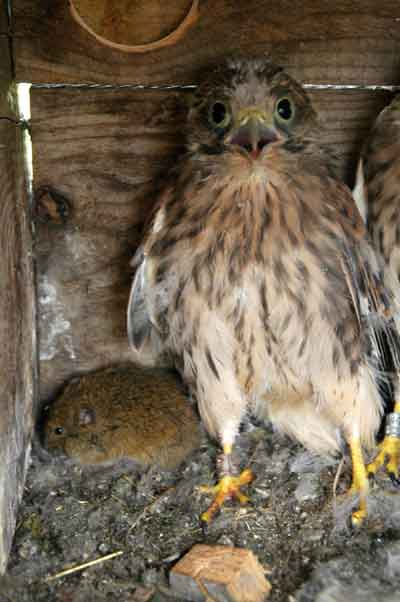The CSIC suggests the use of Kestrels to control pests of voles
March 18, 2009
The study confirms the theory that the expected effect of a generalist Predator is the of stabilizing fluctuations in prey populations and prevent large peaks of abundance, which could be used as a tool to prevent the population explosions of species such as Vole. The work was carried out in the field Azálvaro livestock region, in the municipal terms of El Espinar and Navas de San Antonio, in Segovia, as well as in Navalperal Pinares, Ávila. In the case of the Vole, the demographic found in this region are smaller than those identified in most Nordic regions or neighbouring areas to Castilla y León, where the abundance of Kestrels is lower.
The CSIC researcher and co-author of the study, Juan Antonio Fargallo, points out one of the utilities of the work: "the applied interest of these results is related to the conservation and the economy at a regional level." Given what has happened in the North plateau on the Vole, it would be useful to investigate whether predators, long victimized by hunting interests in Castilla y León, could be used to avoid the population explosions of a rodent, apparently, causing significant damage to agriculture. "On the other hand, it could prevent, in addition, the use of poison as pesticide that causes indiscriminate death of other species, affects the State of conservation of populations of wild and affects wildlife also other economic activities such as hunting".
More complex systems in the Mediterranean area
For Fargallo, "still don't know very well how the population fluctuations of the especies-presa may affect the abundance of predators with a range of trophic or generalists".
The common kestrel is a predator feeding on a wide variety of insects, amphibians, reptiles, birds and small mammals in Mediterranean regions. The population dynamics of the Vole is explained by the number of Kestrels and weather conditions. There are more voles when the previous year there were fewer Kestrels, when the average annual temperature was higher and higher annual precipitation.
In the case of the shrews, their population increased with a decrease in the amount of Kestrels and an increase in temperatures. And on lizards, it affected only the variable precipitation during the summer of the previous year; its population increased when there was a greater precipitation during the month of August of the previous year.









































